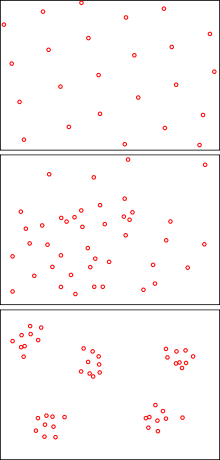- Range (biology)
-
- Population distribution redirects here. For the probability distribution of a statistical population see Probability distribution and Statistical population.
In biology, the range or distribution of a species is the geographical area within which that species can be found. Within that range, dispersion is variation in local density.
The term is often qualified:
- sometimes a distinction is made between a species' native range and the places to which it has been introduced by human agency (deliberately or accidentally), as well as where it has been re-introduced following extirpation.
- for species which are found in different regions at different times of year, terms such as summer range and winter range are often employed.
- for species where only part of their range is used for breeding activity, the terms breeding range and non-breeding range are not used.
- when discussing mobile animals, the species' natural range is often discussed, as opposed to areas where it occurs as a vagrant.
- geographic or temporal qualifiers are often added e.g. British range or pre-1950 range.
There are at least five types of distribution patterns:
- scattered/random (Random placement)
- clustered/grouped (The majority are placed in one area)
- linear (Their placements form a line)
- radial (Placements form a ' x ' shape)
- Regular/ordered (They are not random at all, but follow a set placement. Much like a grid)
See also
References
Categories:- Demography
- Ecology
- Population
- Ecology stubs
Wikimedia Foundation. 2010.

